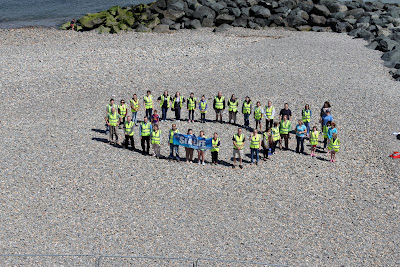IWT Dublin continued with our monthly Green Drinks on the first Tuesday of the month where we tackled the controversial issue of Genetically Modified foods. Conor McGee, postgraduate researcher at UCD bravely took on the task of talking about GMO's and handling the debate that ensued. Conor, although not currently working with GMO crops is very familiar with the issue, and was speaking from a pro-GMO stance. Conor explained the difference between trans and cis modification - transgenesis is where genes are inserted from a non related species, and cisgenesis is where genes are inserted from a closely related species (i.e. one with which it could be conventionally bred). Conor further explained his point of view by highlighting that the GM potato trials being undertaken by Teagasc at the moment would take about 17 years to do using conventional methods - whereas using GM methods, it will take only a couple of years. Furthermore, if this trial is successful it will reduce the need for the current 15 pesticide sprays a year to avoid blight, to just two!!
Conor also highlighted to us that using radiation to cause mutation in food organisms has been ongoing for years and is accepted as a standard practice. However anti-GMO groups do not seem to complain about this method, even though it is far more uncontrolled and we don't know how many genes are affected at a time. Conor concluded by saying that he believed the future lies in taking the best practices from GM crops, conventional breeding and organic farmers and blending them to find the best way forward.
At this stage some of our Green Drinkers joined the conversation to point out that organic farmers manage to produce crops without any pesticide application at all and a lively debate ensued!!! Some visiting American students gave their opinion that the debate between organic vs GM crops is somewhat redundant as it is a debate for the first world - this is not a realistic issue, nor is it a choice for the areas where food is shortest and where these techniques can really be of benefit - they need more resistant crops with higher yields, and they need them yesterday.
Overall, it was a lively Green Drinks with over 50 attendees - which served to entertain and inform, as many differing opinions came together to open an important discussion. IWT's Green Drinks organiser, Debbi Pedreschi rounded off the evening by asking the attendees to raise their hands to show if they were pro, anti, or undecided when it came to GMO's. Although the majority were still undecided, we were surprised to learn that the next largest category were pro-GMO!!! It was generally agreed by the audience that research into topics such as GM crops needs to be tightly regulated and should be carried out through public funding, rather than large multinational companies that will use the data for profit, instead of tackling rising issues such as climate change and the worsening global food crisis.
 |
| The issues driving the GM debate |
 |
| A humorous look at public fears of GM |
 |
| GM foods have the potential to be more drought resistant |

















































